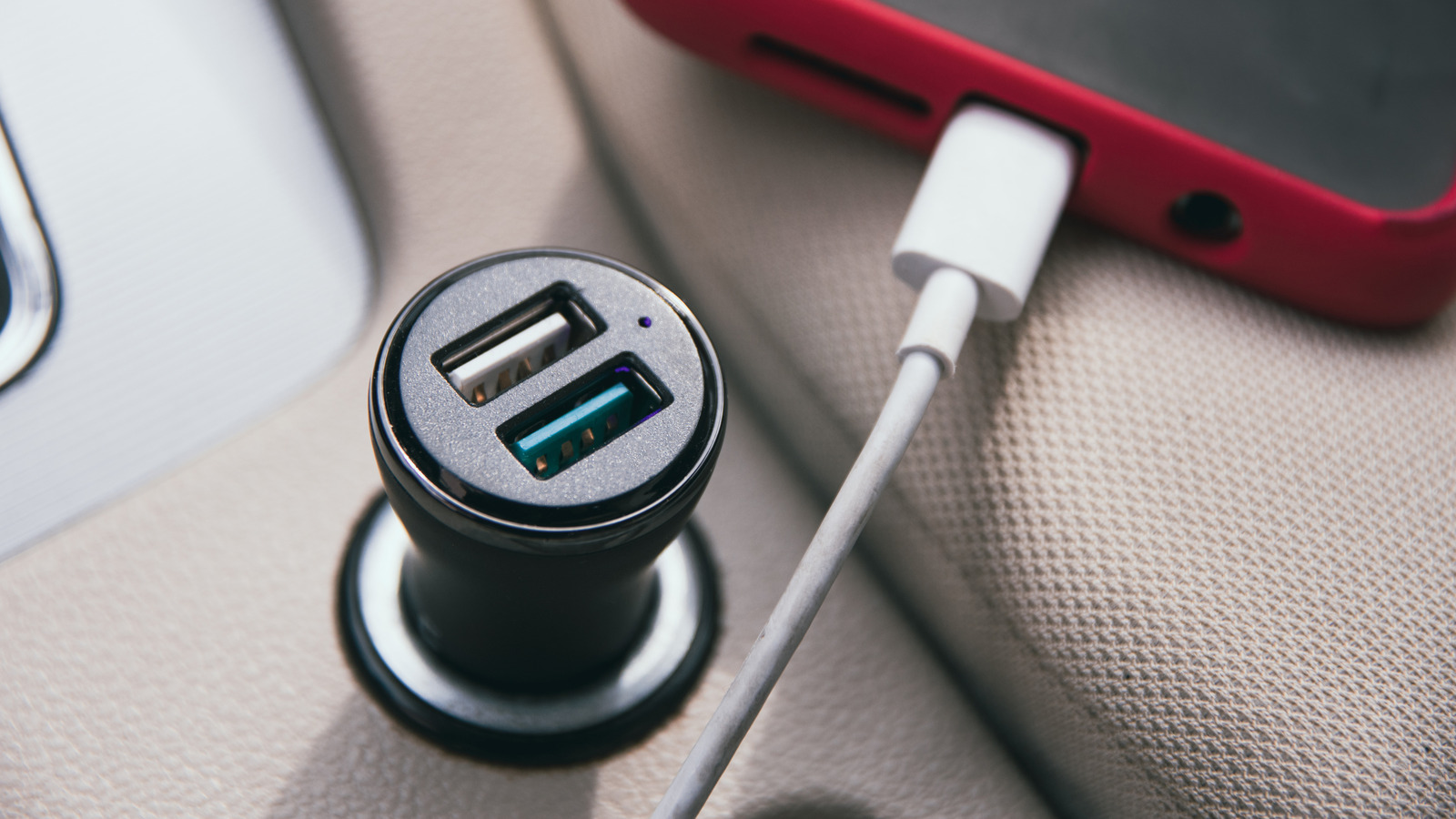Copyright SlashGear

We may receive a commission on purchases made from links. For decades, cars, trucks, and other vehicles have had an electric cigarette lighter built into the dashboard or some other easily accessible place. When you clicked the lighter into the 12V port, it used electrical power from the car to heat a coil which you could then use to light up. Your car's cigarette lighter got its start as a cigar lighter, which is why they have the diameter they have. As cigarettes became more popular, the device took on a new name while keeping its old features. The opposite thing happened more recently when the function evolved from lighting various combustibles to charging or powering electronic devices, while the name remained the same. Despite the dramatic change in usage, people still refer to a car's 12V port as a cigarette lighter. Eventually, car manufacturers started making dedicated accessory ports which will power your electronics but won't light anything. You can use them to power DVD players, phone chargers, portable air compressors, vacuum cleaners, coolers, heaters, and countless other modern or semi-modern contraptions. In some cases, you can even jump a dead battery using the 12V port. Generally speaking, anything with a plug designed to fit into your car's 12V socket is probably safe to use. Still, there are a few things you're better off not sticking in there. In the past, an electric cigarette lighter was a standard feature of pretty much all vehicles, but today the cigarette lighter is only a subset of the increasingly common 12V accessory port. They look really similar and serve similar functions, but there are differences. In short, all car cigarette lighters are accessory ports, but not all accessory ports are cigarette lighters, and it can be hard to tell the difference. Many modern cars have multiple 12V accessory ports and only one (or none) of them will function as a lighter. Some modern cars even come with no 12V ports of any kind, instead opting for USB-A or USB-C ports. Just because it looks like a cigarette lighter, doesn't mean it is. Unless you know for sure, don't jam a lighter in there. Cigarette lighters and 12V accessory ports have their own slightly different standards, with accessory ports slightly narrower. Manufacturers get around the slightly different dimension by using spring-loaded contacts on 12V car plugs. When slotted into a narrower accessory port, the springs compress a little more, but either way you get good contact. The bottom line is that your phone charger will fit into a cigarette lighter port thanks to a little clever engineering, but a cigarette lighter won't fit into an accessory port, at least not smoothly. And if you do force it in there, it might heat up inside a receptacle that wasn't designed to withstand the heat. When in doubt, leave it out. Between its engine, the car battery, and the alternator, your car generates a whole bunch of energy. Most of it gets used to move you swiftly down the road and make sure you're comfortable with climate control, lights, and entertainment in the meantime. Plugging into your car's 12V port lets you draw some of that power to juice up your favorite mobile accessories, but only if they have a compatible plug and are capable of accepting direct current (DC) power. If you want to use devices that use standard plugs or have a larger power draw, like a laptop charger or a mini fridge, a power inverter transforms your car into a massive mobile generator. A power inverter works by DC power from your car's electrical system into the AC (alternating current) power used by many common electrical devices. Inverters usually feature standard electrical ports, allowing you plug in anything from a hair dryer to a TV. There are different types of inverters, pure sine wave and modified sine wave, and they have different capabilities depending on whether they're plugged into the 12V port or connected directly to the battery. A good power inverter should have built-in safety mechanisms to protect you from overloads, but it's important to understand how much power you're trying to draw and the limitations of your car and your inverter. Many modern cars come with all sorts of fancy features like rearview cameras, dashboard cameras, and touchscreen dashboard displays. If you're driving an older car without these modern amenities, you can upgrade your ride by adding aftermarket versions of those features. Depending on the version of your CarPlay hub or dashcam, it might wire directly into your car's electrical system or it might plug into the outlet. If it's the latter, you'll want to use caution, your new accessories might lead to some unexpected frustrations. While in-car 12V sockets have manufacturing standard, they don't all work exactly the same way. Some sockets are designed to activate when the engine is running and deactivate when it's not, while others keep pulling power anytime something is plugged in, even if the car is off. If you have devices like a dashcam plugged into our car's 12V socket overnight, you could run the risk of waking up to a dead battery in the morning. Check your car's owner's manual to find out how your car's ports work before leaving anything plugged in. These days, a cell phone is practically a requirement for navigating the modern world. As a result, many of us spend a relatively significant amount of time making sure we've got enough battery to get through the day. For a lot of us, that means having a phone charger in the car. If your car doesn't have a built-in USB charging port, you can add one by plugging an adapter into the 12V socket. In a pinch, you can find cheap ones at just about any gas station, but they could cause more trouble than they're worth in the long run. A poor quality phone charger can provide unstable electrical flow and generate excess heat, which can damage your phone or at least prevent it from charging or operating correctly until it cools down. Moreover, when electrical current is unstable, your phone's hardware has to do more work to keep everything operating properly, leading to excess wear and tear. Most of these consequences are subtle and slow-moving, chipping away at your phone's battery life over time. Other consequences can be more immediately inconvenient. A bad charger can pull too much power and blow a fuse or cause other damage to your car's electrical components. Make sure you're using a good quality plug and cable, which have been tested for use in a car's 12V port. And if you notice any of these symptoms from your charger, replace it. Your car's 12V socket or cigarette lighter is a direct connection to your car's electrical system. It is designed to deliver energy to portable devices, or to a metal coil until it glows red hot. It's perfectly safe when used as intended, but in much the same way you don't want to stick a fork in an electrical socket, you don't want any foreign objects getting in there. If coins, debris, or other small objects (crumbs and other bits of food, wrappers and other garbage, dust and grime) end up in your 12V socket, it could break the outlet or cause more serious damage. If you find any objects in your 12V port, carefully remove them with tweezers or a vacuum. Be careful not to touch the contacts with your tweezers, the last thing you want to do is complete the circuit with a piece of metal you're holding in your hand. If your car has a tendency for collecting debris, you might want to consider getting a stopper to plug up the port when you're not using it. Now that you know what not to use in your car's 12V outlet, check out these gadgets and accessories that make it easier for you to get work done in your car.



